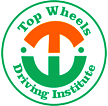Recent News
What are the Objectives of Driving School?
Association of driving schools undertakes driver education
Ghana faces shortage of Professional Driving Instructors
Contact us
-
Spintex Road
18 Junction
Adjacent kfc - support@topwheelsdrive.com
- +233 244 646 477 0303 962 628
-
Mon to fri - 7:00 to 6:00
(Sat - 9:00 to 3:00)
(Sunday Closed)

Our standard lesson offers 18 hr theory and 30 hr practical lessons over a period of three months; this is designed to give our beginners the very best good speech topics chance of passing all tests and turning them into safe and confident drivers.
Whether you’re looking to discover your freedom by learning to drive, you’ve recently passed your test and want to improve your skills or you’re a nervous driver who could benefit from a refresher course, Topwheels Drive has a range of driving lessons that can support you.
Guide to learning in an automatic
There are loads of reasons you might choose to learn in an automatic car. A lot of people find it a lot easier than using a manual. And if you have a disability that makes it difficult to change gears, an automatic is a great option.
Why choose us:
With qualified driving instructors nationwide, learning to drive with Topwheels Drive couldn’t be simpler. Topwheels Drive instructors are trained to the highest standards, go through frequent background checks and drive new vehicles maintained to the highest standards
Frequently asked question:
That’s not to say you don’t have gears in an automatic. They’re just a bit more basic. You sometimes get others, but the main four are:
● P: Park - This is the same as neutral, but the wheels are locked. You should be in park when you switch the engine on or off.
● D: Drive - Where the fun begins! This is for going forward, and the car will automatically go from first to second gear and so on. There are sometimes additional variations, but you’re likely to spend most of your journey in this gear.
● N: Neutral - You can put the car in neutral when stopped in traffic or at lights.
● R: Reverse - Does what it says on the tin.
In a manual car, gears are usually changed by pressing on the clutch. This means that automatic cars don’t have a clutch, making them difficult to stall. You also won’t grind the gears, or put it in the wrong gear by mistake.
Automatic cars tend to be more costly. They use more fuel on average, and are more complicated to build. This also means they’re comparatively expensive to repair and insure.
Also, if you live in a hilly area, automatics can be really handy. Hill starts are much easier in an automatic, as you don’t have to find the bite of the clutch, and are at less risk of rolling backwards.












